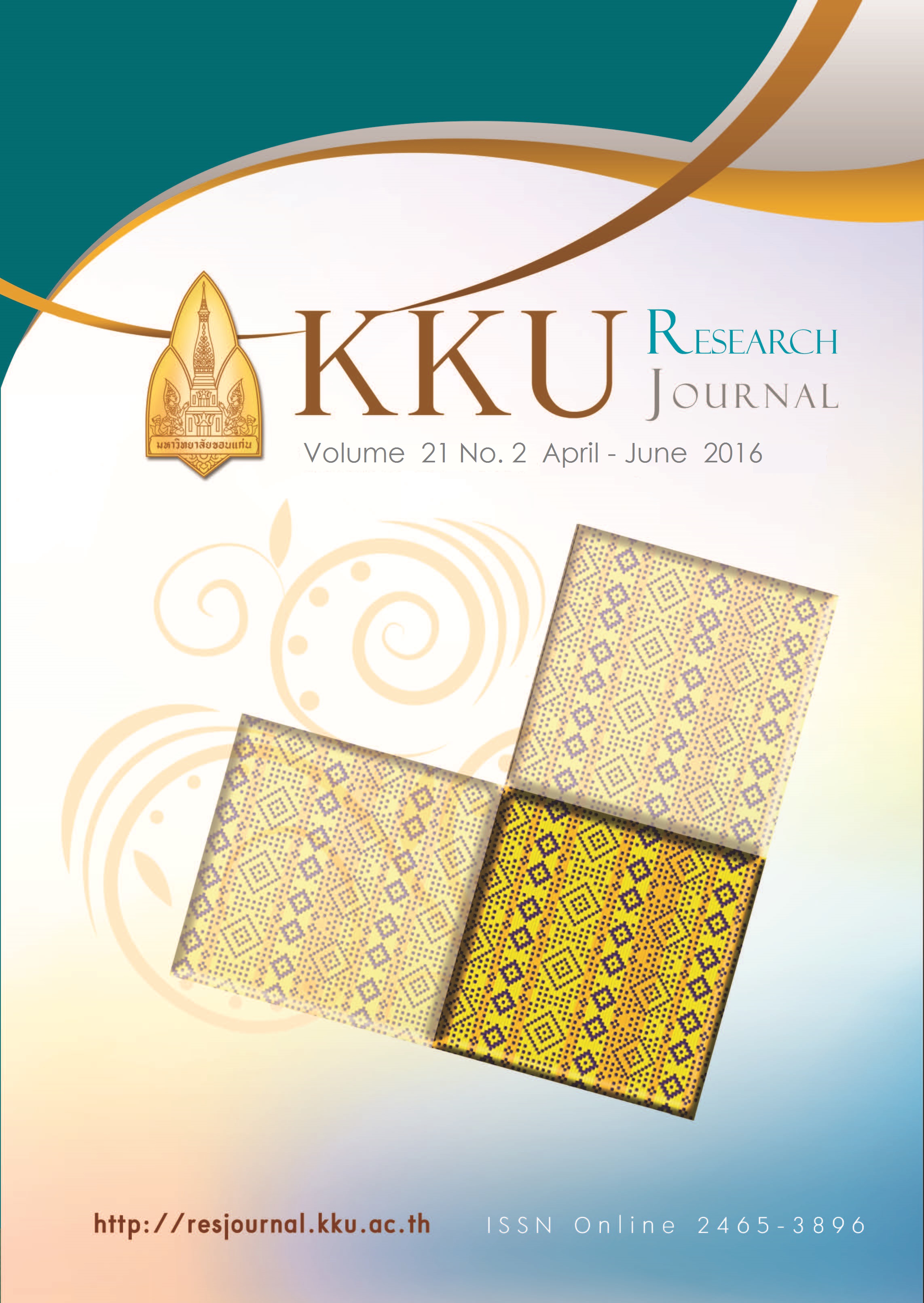Chemical hazards associated with instant black rice beverage
Main Article Content
Abstract
The primary objective of this study was to analyze some chemical hazards, develop a HACCP plan and its validation to ensure a safety system for production of instant black rice beverage. Chemical hazards in food and beverage produced from cereal are mostly from natural occurrence. Lead and aflatoxins, which could be produced by toxigenic molds associated with black rice and emerged at each stage of the production was described. Knowing of product characterization, raw materials, ingredients, and the production flow diagram are the keys to develop a HACCP plan. This plan was developed the execution of hazard analysis (HA), identifying the critical control points (CCPs), establishment of critical limits (CLs), monitoring procedure, establishment of corrective action, establishment of verification procedure and establishment of record keeping. The validation of HACCP plan was based on the safety hazard testing, scientific publication and the regulatory documents. Status of the control measures and effectiveness to ensure the chemical safety of instant black rice beverage were discussed.
Article Details
References
[2] Resende-Filho MA, Hurley TM. Information asymmetry and traceability incentives for food safety. International Journal of P r o d u c t i o n E c o n o m i c s . 2012;139(2):596-603.
[3] Saltini R, Akkerman R. Testing improvements in the chocolate traceability system: Impact on product recalls and production e ff i c i e n c y. F o o d C o n t r o l . 2012;23(1):221-6.
[4] Codex. Hazard analysis and critical control point (HACCP) system and guidelines for its application. Annex to CAC/RCP. 2003:1-1969.
[5] NACMCF: National Advisory Committee on Microbiological Criteria for Foods (1998). Hazard analysis and critical control point principles and application guidelines. Journal of Food Protection,61(9), 1246–1259.
[7] Scott VN. How does industry validate elements of HACCP plans? Food Control. 2005;16(6):497-503.
[8] NFPA : National Food Processors Association (2002). Validation guidelines for automated control of food processing systems used for the processing and packaging of preserved foods. Washington, DC: NFPA.2002.
[9] AOAC: Association of Official Analytical Chemists. Official Method of Analysis Association of Official Analytical Chemists Washington DC. Gaithersburg, MD, USA2000. 17th edition
[10] Alberts JF, Engelbrecht Y, Steyn PS, Holzapfel WH, van Zyl WH. Biological degradation of aflatoxin B1 by Rhodococcus erythropolis cultures. Int J Food Microbiol. 2006 5/25/;109(1–2):121-6.
[11] FAO/WHO: Codex Alimentarius - General standard for contaminants and toxin in food. Schedule 1 Maximum and Guideline level for contaminants and toxin in food., Joint FAO/WHO Food Standard Programme, Codex Commitee, Rotterdam, Reference CX/FAC 02/16.2002. Available from: www.fao.org/es/ESN/food/foodquality_en.stm.
[12] Saleemullah, Iqbal A, Khalil IA, Shah H. Aflatoxin contents of stored and artificially inoculated cereals and nuts. Food Chemistry. 2006;98(4):699-703.
[13] Ming-Ho Y. Environmental Toxicology:Biological and Health Effects of Pollutants. CRC Press LLC, ISBN 1-56670-670-. 2nd Edition ed. Boca Raton, USA2005.
[14] Liu Z, Gao J, Yu J. Aflatoxins in stored maize and rice grains in Liaoning Province, China. Journal of Stored Products Research. 2006;42(4):468-79.
[15] Filon J, Ustymowicz-Farbiszewska J, Karczewski J. Lead content in cereal products as a population health threat marker: a case study in the province of Podlasie. Journal of Elementology. 2013;18(3).
[16] Kujawa M. Evaluation of Certain Food Additives and Contaminants. WHO Technical Report Series 859. VI and 54 pages, 1 table. World Health Organization, Geneva 1995. Price: 11, Sw. fr. Food/Nahrung. 1997;41(2):124-.
[17] Piva G, Galvano F, Pietri A, Piva A. Detoxification methods of aflatoxins. A review. Nutrition Research. 1995 5//;15(5):767-76.
[18] H adjichris todoulou C. EU SHIPSAN ACT JA-Newsletter: Issue 9. 2009.
[19] Sutinium D, Haruthaithasan V, Chompreeda P. Development of instant nutritious beverage from germinated jasmine brown rice for elderly consumers. KASETSART JOURNAL. 2008;42(1):88.
[20] Yuthavisuthi P, Chompreeda P, Pirak T. Development of instant beverage from predigested broken jasmine brown rice and job’s tears for diabetic patients. Kasetsart Journal - Natural Science. 2012;46(5):795-803.


